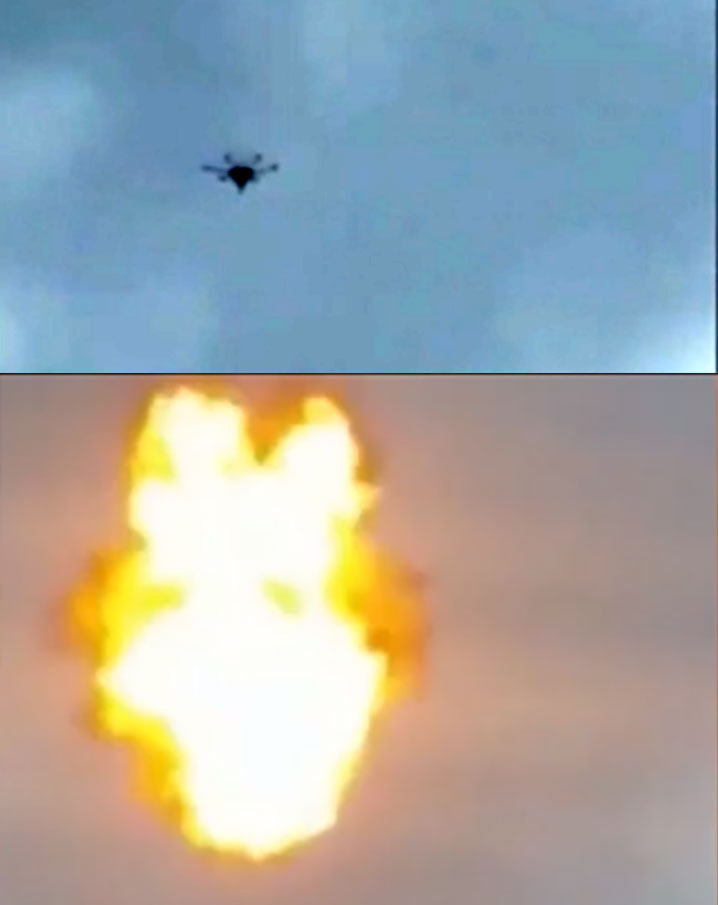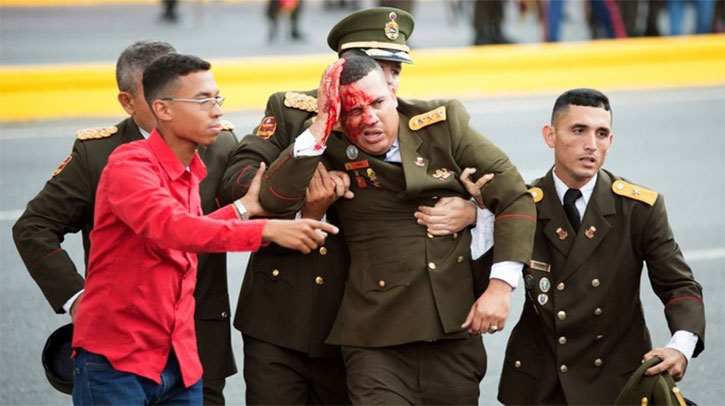The failed assassination attempt in Caracas, Venezuela highlight the potential of drones as a weapon and a tool of terror, and the vulnerability of critical assets, even where drone countermeasures are active.

The incident happened during a ceremony celebrating the 81st anniversary of the Venezuelan National Guard in Caracas on August 4, 2018. As President Nicolas Maduro addressed a military parade, a loud bang sounded. The surprised president paused and started to the sky for a second, his bodyguards soon responded and rushed to shield him. A few seconds later the soldiers on parade began to scatter, fearing a drone they have seen above them. That drone soon crashed into a nearby building and exploded.
The information released by the Venezuelan authorities indicate that two drones were involved in the attack. According to a video released few hours after the incident, at least one of the drones was a commercial, remotely controlled ‘hexarotor’ drone (six rotors) – the model reported to be the DJI M600 drones that can carry a payload of 5.5 kg. According to Venezuelan sources it carried one kilogram (2.2 pounds) of explosives. This payload was likely high explosive, having the potential to cause effective damage within a 50-meter radius.
According to Interior and Justice Minister Nestor Reverol one drone flew over the tribune where the president stood. However, it did not explode over its target since it lost contact with its operator by a ‘signal inhibiting equipment’ that supported the event. The drone was activated as it moved beyond that ‘protective bubble’, and exploded outside the target’s effective perimeter. The drone’s lethality was clearly demonstrated by the casualty toll – seven wounded, three of them in critical conditions.
The second drone went out of control and crashed into a nearby building causing a fire. The cause could be the operator abandoning it, or due to loss of control because of anti-drone countermeasures.
Authorities in Caracas arrested six perpetrators accused in the assassination attempt. A local unknown rebel group calling itself the “National Movement of Soldiers in T-Shirts” claimed responsibility but provided no proof for that claim. Venezuela blamed Colombia and the USA for sponsoring the attack, but both nations flatly denied those accusations.
Navigation signal denial and jamming of control are two of the most common practices in counter-drone operations. Such actions cause a drone to halt, or go back to its point of origin. Nevertheless, control jamming is power dependent and therefore has a limited effective range, particularly where operators are near. Some reports claimed the drone was ‘disguised’ as a TV camera covering the event, which could explain how it managed to get as close to the target as it did, despite the presence of counter-drone measures.
“The security of any asset whose perimeter is protected two-dimensionally on the ground will need to be also protected in the third dimension – from attacks from the air.” Oleg Vornik, CEO and Managing Director of DroneShield commented. DroneShield is one of the pioneer developers of man-portable counter-drone systems. The company has recently received multi-million dollar orders for anti-drone equipment from a Middle Eastern Ministry of Defense.
“We expect that this latest incident involving a head of state will result in governments around the world accelerating their implementation of anti-drone mitigation measures,” Vornik added.




















